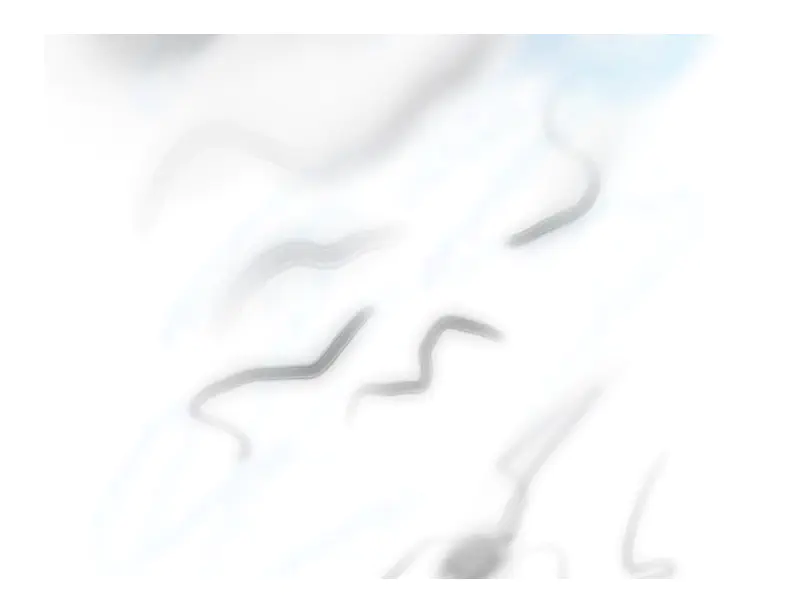Visual Snow: Why I Can't Stand White PowerPoint Backgrouds
Why a rare neurological condition makes conferences a difficult experience.
 An illustration of visual snow phenomena against a white background.
An illustration of visual snow phenomena against a white background.
So, here’s a bit of a personal post. In it, I want to tell you about why I can’t stand PowerPoint slides with white backgrounds, why they make conferences a bit of a miserable experience for me, and consequently why I haven’t been to as many as I’d like in recent years.
At the time of writing, the APS March Meeting 2023 is just a few weeks away and I’m starting to think about the talk that I’ll be giving. I’m also starting to slightly dread the entire thing, as conferences stopped being fun for me quite a while ago. Not because I don’t like them – quite the opposite – but for an unusual medical reason.
Let’s back up a bit. When I was 28, two-and-a-bit-years into my first postdoc at the Institut de Physique Théorique in Saclay, I started to notice weird problems with my eyes. I was seeing flashes of light, and odd dark shapes that seemed to be coming from inside my eye, like things floating around the inside that were casting a shadow on the back of my eye. The onset of these symptoms happened during a particularly stressful time, and I ignored them at first, thinking it was just stress or my imagination. It turned out to be neither.
As some of you may know, these are warning signs of a detached retina, which is a frightening thought. Once I learned this, I spent a few months racing back and forward from opticians and eye hospitals – most of whom I barely understood with my (at the time) poor French – and I was terrified that every flash of light could be the last thing I ever saw. In the end, after going through a lot of tests, it seemed that my eyes were – mercifully – fine. But the problems never stopped. In fact, they got worse.
Eventually I found out about a rare neurological condition called ‘visual snow’, which is suspected to be related to some form of cortical hyperactivity in the brain, but the jury is still out on the precise cause. It’s kind of like tinnitus for the eyes: a constant random noise that the brain is entirely unable to filter out as it should.
Since then, things have got both worse and better. Worse in the sense that not only did the symptoms not go away, but I started to realise I’d had a lot of others for a long time without realizing (palinopsia, ectoptic phenomena, blue field entoptic phenomena, self-light of the eyes, spontaneous photospia…). Better in that I read the sparse medical literature that was available, scoured internet forums and help groups, and discovered the Visual Snow Initiative, which helped me realise that I’m not alone in this. I should note here that I’ve never been formally diagnosed, but my symptoms match so well that there’s little room for doubt.
Now onto the bit about presentations.
For me, the effect of visual snow has been that I can’t look at certain things without becoming acutely aware of the floaters, flashes and other so-called ‘ectoptic phenomena’. This includes things like bright blue skies, bright white computer screens and – crucially for this post – bright PowerPoint presentations with white (or pale) backgrounds. I find it hard to focus on the content of the slides and on the speaker’s words, and I quite rapidly end up with a headache or migraine, meaning that a long day of conference slideshows with bright white backgrounds is a guaranteed way to make me feel terrible and ensure that all I want to do it go lie down somewhere, not continue to talk physics at networking events and dinners. In other words, I end up feeling so ill that I miss all the main benefits of attending conferences. This has undoubtedly had a negative effect on my career, making it very difficult for me to engage with colleagues in the ‘usual’ way, and – for a while – making me reluctant to attend conferences at all.
I’ve learned to deal with this in a variety of ways. For a while, I wore tinted glasses at work while I was getting used to it, and kept the lights off in the office. I may or may not have developed a reputation as a bit of an eccentric among those who didn’t know why I was doing this. During the worst of the pandemic years, while working from home I was able to control my environment, darkening my room and setting up my computer screens in such a way that they weren’t too bright to look at. Since then, with some medical help, I’ve learned other ways to cope. (Though I’m not a doctor – not that sort of a doctor, anyway – so I won’t share here what works for me. Discuss with a medical professional if you need to.)
These days, I’m managing my condition better than ever before, and I’ve even avoided telling anyone about it in my last few jobs. But with the return to in-person conferences and the APS March Meeting coming up, it feels like now is the time to speak up. If you’ve ever seen me give a talk in the last few years, you might notice that these days I favour white text on a dark blue background. This isn’t just to be different, but it’s because it’s the only way I can get through a talk – even my own – without feeling terrifically unwell by the end.
So, when you’re putting together your slideshows for the upcoming conference season, please think about people with visual impairments, and how a few small changes on your side could make a world of difference for us. Thanks.